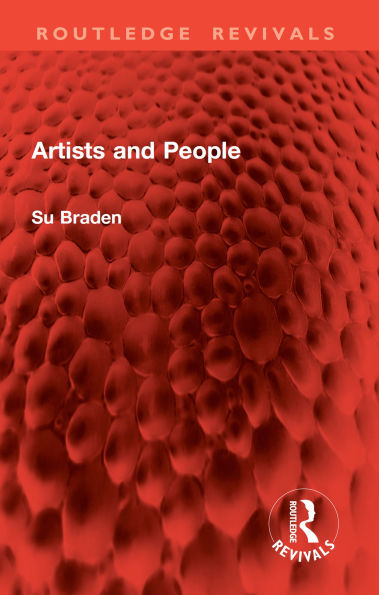First published in 1978, Artists and People examines the formal attempts by arts administrators to set up schemes for artists to work in community contexts. The experience of creative artists who have taken up ‘residencies’ in schools, libraries and art centres is contrasted with the unique forms of expression developed by local communities themselves in new towns, housing estates, rural centres, and inner cities, in areas ranging from Tower Hamlets in London, through Craigmillar in Scotland, to new towns such as Telford and Milton Keynes.
The book takes the form of a series of accounts of the experiences of artists and communities who have come together in contexts not usually seen as arenas for the arts. Su Braden looks at these experiences in the light of the philosophy that the right to artistic expression is a basic human freedom for everybody, not just for ‘artists’. In writing the book she has drawn on her experience as a community arts worker and she assesses the effect of the traditional structures (the theatre, gallery and concert hall) both on the form of art itself and the critical relationship which is intrinsic to its development. By looking at the first-hand experience of artists and local people, she has documented the dependence of much contemporary art for its form and the nature of its critical relationships on the formal structure offered by traditional outlets. In contrast, the examination of the relationship between artists and communities who have developed creative forms out of a more spontaneous recognition of mutual needs and talents reveals a new perspective on the social value of liberating artistic expression from its formal restraints.
First published in 1978, Artists and People examines the formal attempts by arts administrators to set up schemes for artists to work in community contexts. The experience of creative artists who have taken up ‘residencies’ in schools, libraries and art centres is contrasted with the unique forms of expression developed by local communities themselves in new towns, housing estates, rural centres, and inner cities, in areas ranging from Tower Hamlets in London, through Craigmillar in Scotland, to new towns such as Telford and Milton Keynes.
The book takes the form of a series of accounts of the experiences of artists and communities who have come together in contexts not usually seen as arenas for the arts. Su Braden looks at these experiences in the light of the philosophy that the right to artistic expression is a basic human freedom for everybody, not just for ‘artists’. In writing the book she has drawn on her experience as a community arts worker and she assesses the effect of the traditional structures (the theatre, gallery and concert hall) both on the form of art itself and the critical relationship which is intrinsic to its development. By looking at the first-hand experience of artists and local people, she has documented the dependence of much contemporary art for its form and the nature of its critical relationships on the formal structure offered by traditional outlets. In contrast, the examination of the relationship between artists and communities who have developed creative forms out of a more spontaneous recognition of mutual needs and talents reveals a new perspective on the social value of liberating artistic expression from its formal restraints.

Artists and People
220
Artists and People
220Related collections and offers

Product Details
| ISBN-13: | 9781040353349 |
|---|---|
| Publisher: | Taylor & Francis |
| Publication date: | 05/01/2025 |
| Series: | Routledge Revivals |
| Sold by: | Barnes & Noble |
| Format: | eBook |
| Pages: | 220 |
| File size: | 3 MB |
